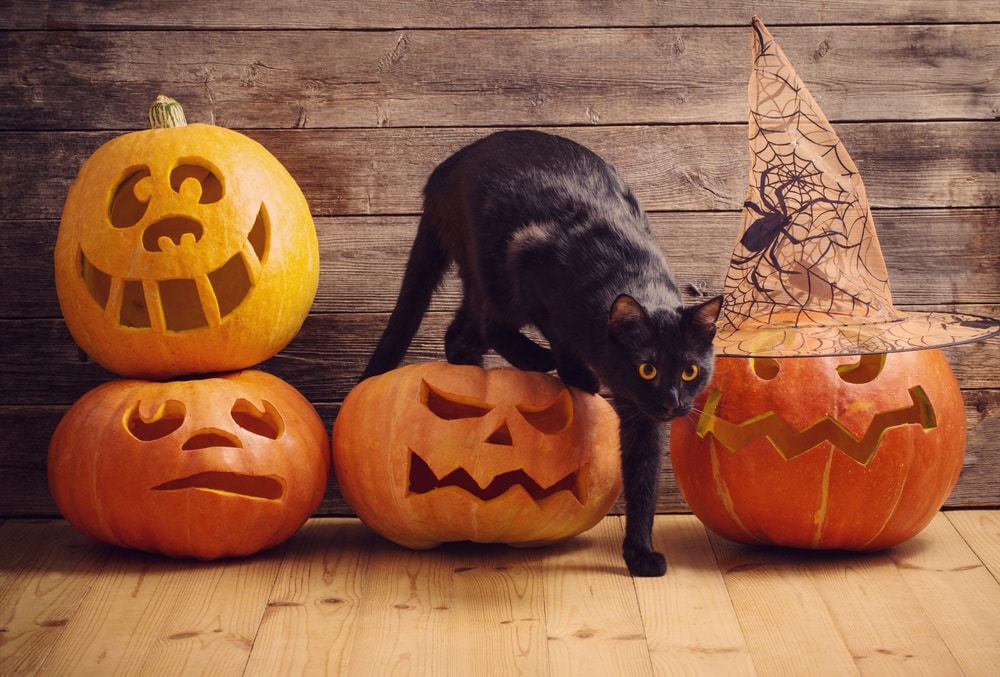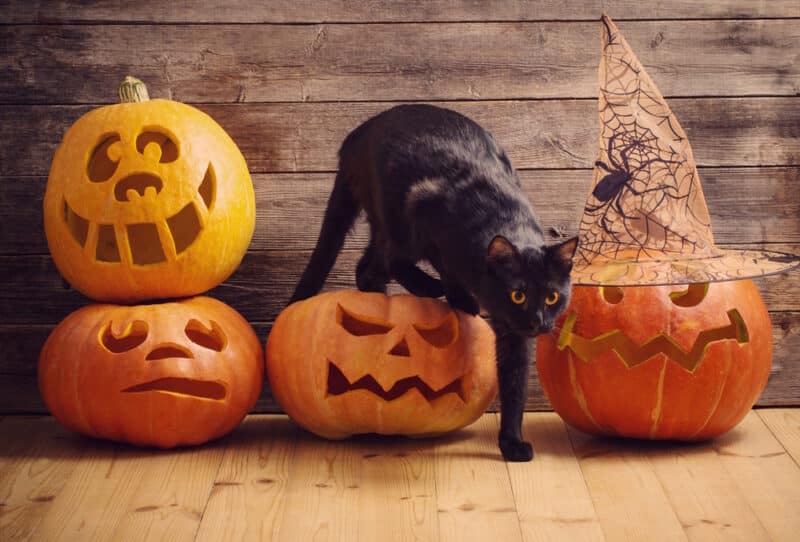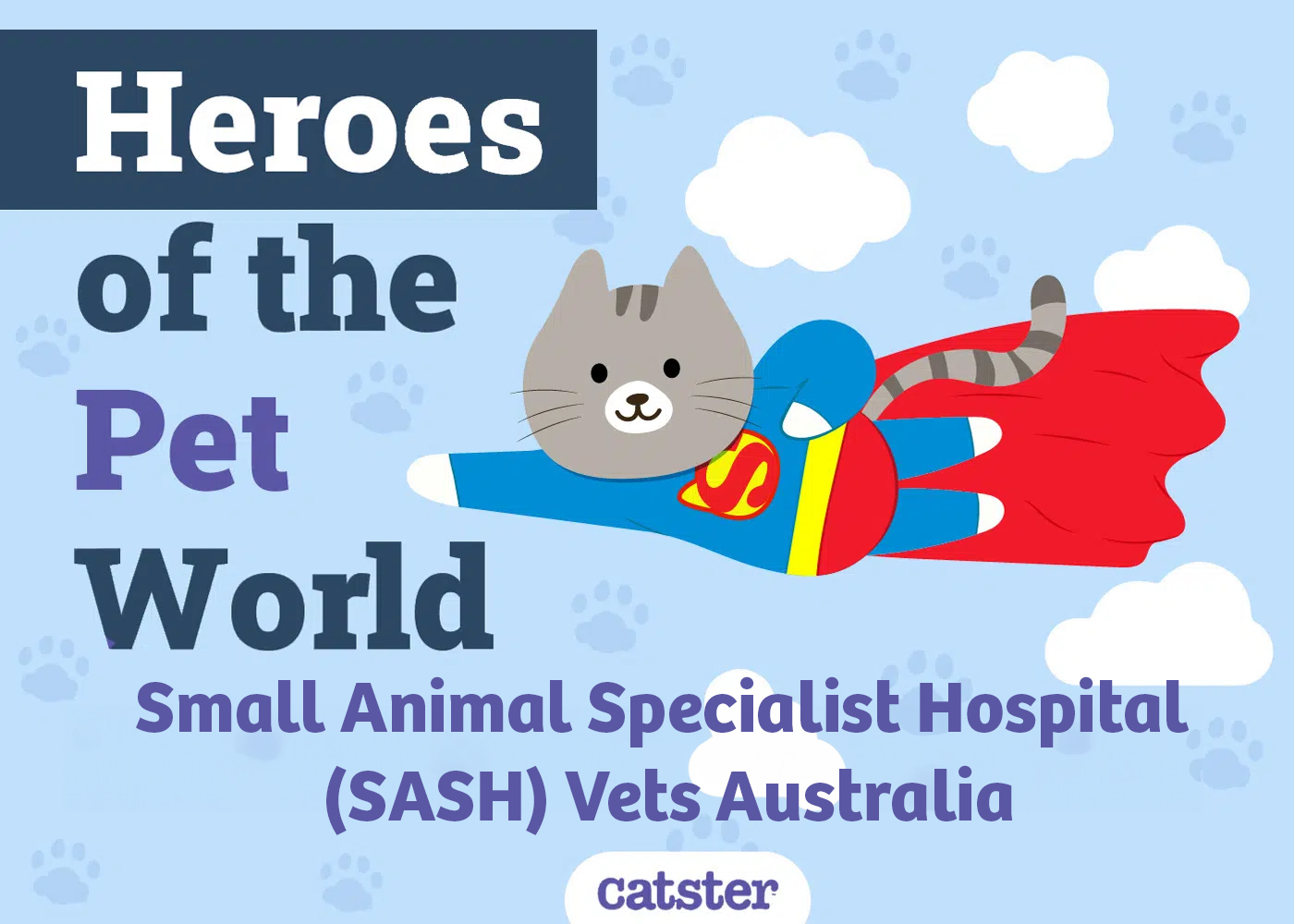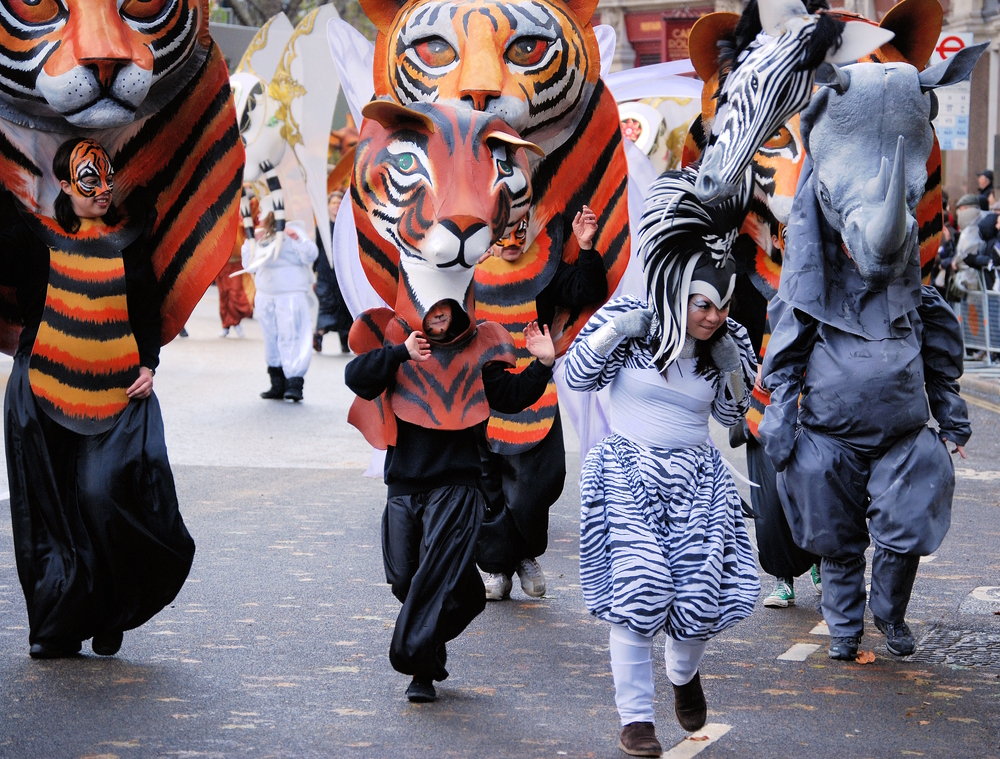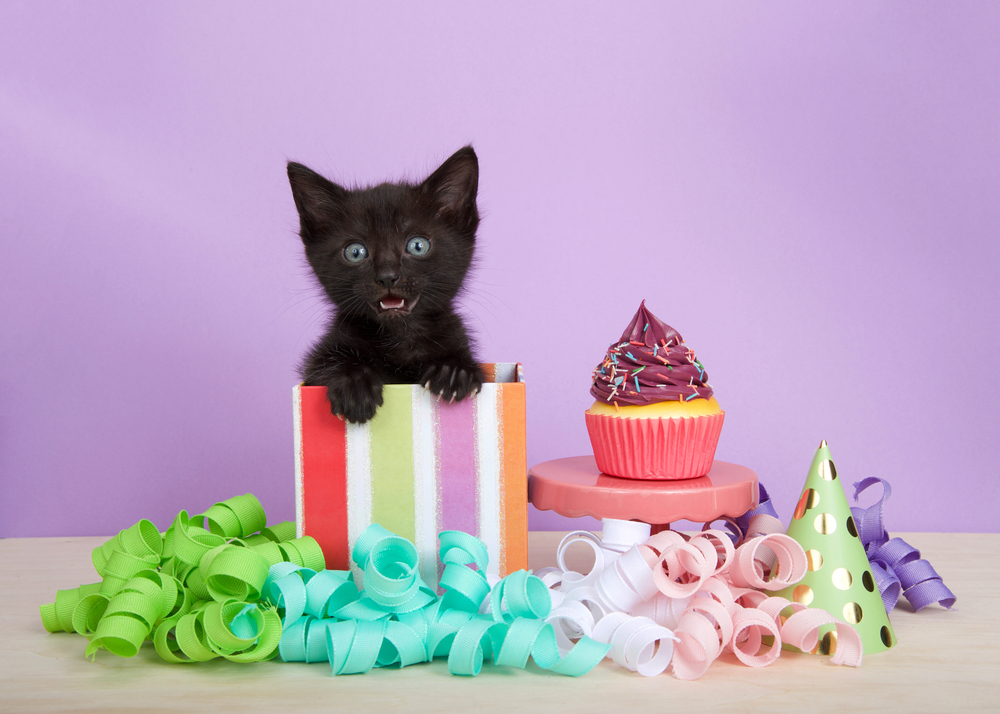It’s the spookiest month of the year (and my favorite!) but what’s up with all the black cat decorations everywhere? On the one hand, yay, because I love cats and always enjoy an excuse to celebrate them. But the Halloween and cat obsession doesn’t seem so friendly some of the time. The black cats in those window decals look mighty riled up, and black kitties in Halloween pop culture are usually yowling, not purring. Some shelters refuse to adopt black cats in October due to concerns about abuse — in fact, one attracted controversy by offering free (carefully vetted) adoptions in the month before Halloween to encourage people to take a a new friend home.

I was curious about the stigma surrounding black cats and other black animals — Churchill’s infamous black dog is just one of them — and so I took a look into the archives with some assistance from Gillian Chisom, an early modernist at the University of California Berkeley whose studies include witchcraft and the origins of the mythology surrounding familiars. When it comes to Halloween kitties, where an arched back and puffed-up fur goes, a pointy hat usually follows close behind.
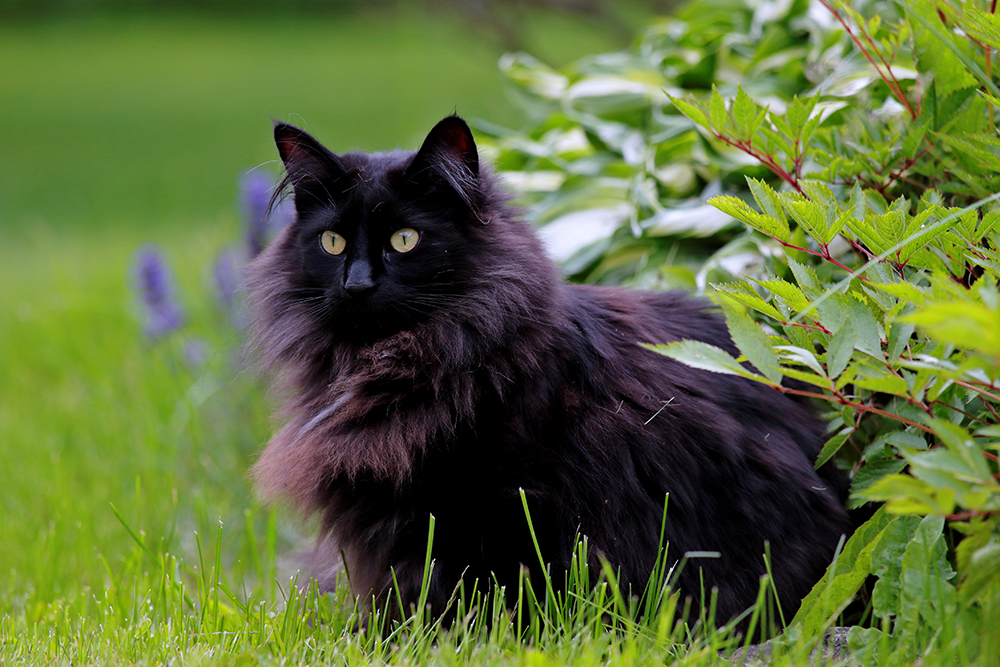
Before we explore the connection between cats and Halloween, we have to understand a little more about the holiday itself, with the caveat that there are a lot of explanations behind the origins of Halloween. Some theorists claim Halloween has its origins in the appropriation of a pagan Celtic holiday, to stamp out paganism while also giving converted pagans something to do on a former holiday (similar theories surround Christmas, which includes themes associated with pagan solstice celebrations). Others argue that All Hallow’s Day or All Saints’ Day (Nov. 1) is a holiday in its own right for the Christian community — for you etymology fans out there, the term dates to the mid-1700s and was derived from the Scottish “eve of all saints.” Modern iterations of paganism such as Wicca have also laid claim to the holiday. Confusing!
Researchers and folklorists have found that practices surrounding Halloween — wherever it comes from — date back thousands of years, probably to pre-Roman times, though today, many of the things we do, such as carving pumpkins (traditionally turnips), trick-or-treating, and dressing up, appear to be lifted from Irish culture. Some of these activities appear to be rooted in Samhain traditions — Samhain was the holiday designated to celebrate the end of the harvest and the start of the darker season in Celtic tradition, and it’s likely that Roman conquerors and later Christians adopted the holiday, folding it into folklore.
Notably, the Celts believed the holiday represented a time when the veil between the worlds was thinned, which is why Halloween is associated with death and the dead. This might surprise you, though: Despite the fact that many associate paganism with witchcraft, making Halloween seem like a natural in for witches if it was a pagan holiday, the witch-Halloween connection is an American invention, and it’s a pretty recent one, too, according to scholar Owen Davies.
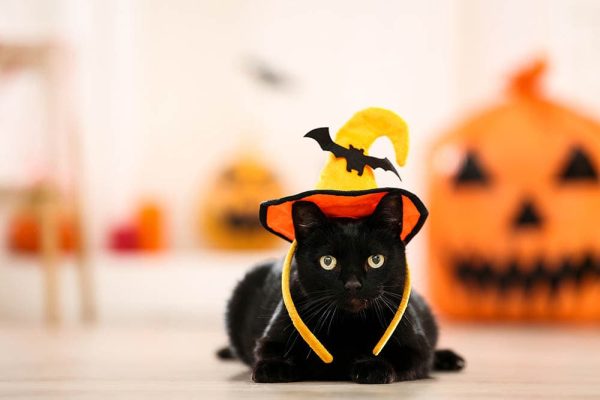
In the late 19th century, he explains, the iconic “witch” as we envision her today started to appear in pop culture, and a savvy businessman in Salem (yes, that Salem) started selling business cards and branding the site of some of America’s most grisly witch trials “witch city.” The modern pagan movement reappropriated the holiday along with the imagery, and suddenly, witches and Halloween were like ice cream and apple pie. From there, the notion spread across the country, and the witch became firmly seated in the American pantheon as a Halloween phenomenon — these days, Salem’s peak tourist season is around Halloween, and having been there in late October (to look at documents from the witch trials, oddly enough), let me tell you: They take it extremely seriously.

Where cats and Halloween converge
Here’s where things start to get interesting because black cats are commonly cast in media and pop culture as familiars — animals that assist witches while they perform spells. Beliefs about familiars during the era when people thought witches were capable of casting evil spells, however, were highly variable, and the notion of an animal familiar is pretty unique to England, something Chisom says is difficult to explain but might be rooted in different approaches to witchcraft in England vs. the Continent.
In England, a successful accusation had to demonstrate that a witch had intent to do harm — for example, to kill a baby or cause a cow’s milk to dry up. On the Continent, however, witchcraft was about heresy, not about casting spells. Because few people in England actually found accused witches standing over cribs killing babies — which would be murder — they began to look to instruments of death and destruction a little farther from home, arriving on the notion of a familiar: an animal that could do a witch’s bidding after it had drunk a little of her blood. (One reason why witches were stripped during their trials was to look for curious markings or nipples where a familiar might have drunk — in Salem, the girls at the heart of the witch trials accused Martha Corey of “suckling” a yellow bird “twixt her fingers.”)
Chisom’s research has found that the animal most commonly targeted was the household cat, and one reason, she suspects, is that the keeping of household pets was on the rise at the time. Furthermore, she explains, cats also had a strong connection with the demonic (poor things) in British folklore. When it came time to find someone to blame for things going south, all eyes were on the cat. With a bigger presence of cats — and dogs, another popular familiar — it was easier to find an animal to accuse of being a familiar in disguise.
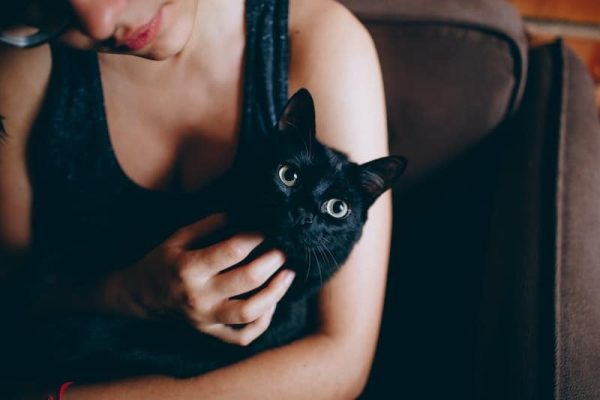
Why black cats are associated with witches
Superstitions have surrounded cats for thousands of years — some good, some bad. Black cats in particular have become targets of fascination, including in ancient Egypt (where they were revered) and medieval Europe (where they were targeted in a papal bull known as the Vox in Rama, which identified them as diabolical). Folklore assigning bad luck to cats in general, particularly black ones, has been a persistent part of European societies for centuries, much to the misfortune of innocent felines (like those slaughtered during the Plague).
A particularly interesting bit of folklore about black cats — and a reason they might be associated so strongly with witches — is that they’re also closely associated with fairies. Chisom explains that at least some of the mythology surrounding witches probably comes from fairy folklore, another reminder that some Christian superstitions and attitudes were rooted in existing cultural beliefs. Scottish and Irish folklore include legends about a cat fairy who haunts the moors, possibly up to no good. The fae creature might have evolved into a witch who could turn into a cat in Christian folklore, reinforcing the notion that cats were dangerous or evil.
Fortunately, we know better today and love our black cats as much as we do every other feline on the color spectrum. In fact, the myth that black cats are less likely to be adopted is actually just that: a myth. Repeated studies and surveys indicate that black cats are adopted at the same rate as everyone else — but it’s worth noting that cats overall have a lower adoption rate than dogs.
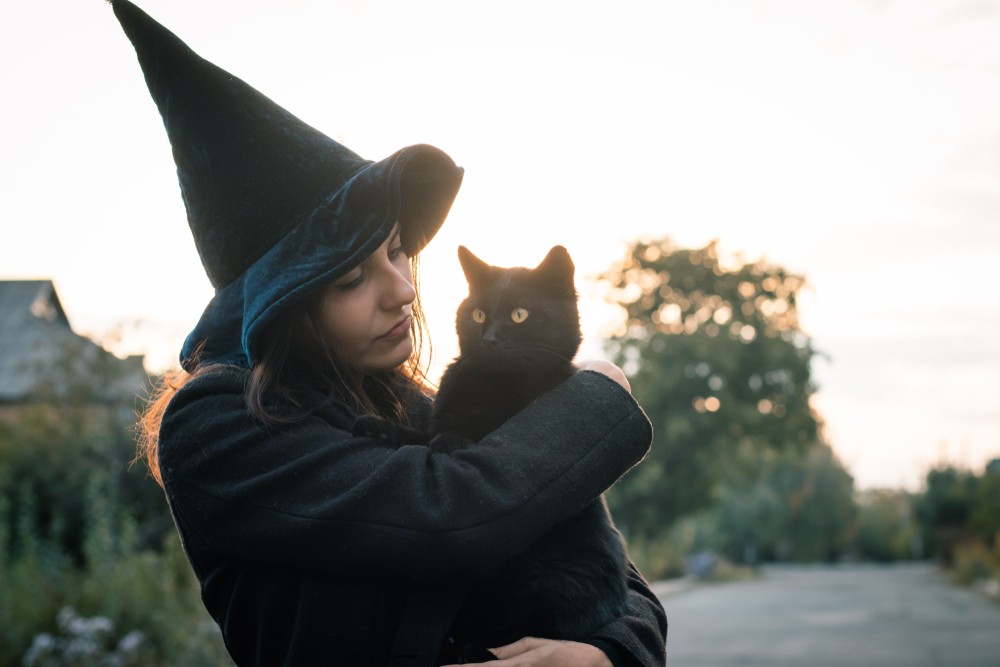
Related Reads:
- Black Cat Awareness Month: When Is It & How to Celebrate
- What Can I Do With My Cat on Halloween? 7 Ways to Keep Them Safe
Featured Image Credit: Maya Kruchankova, Shutterstock

